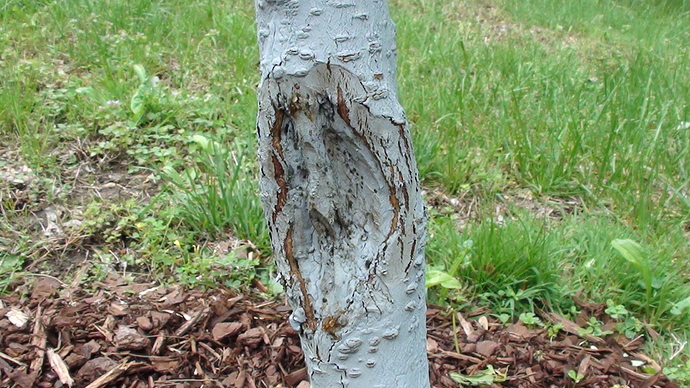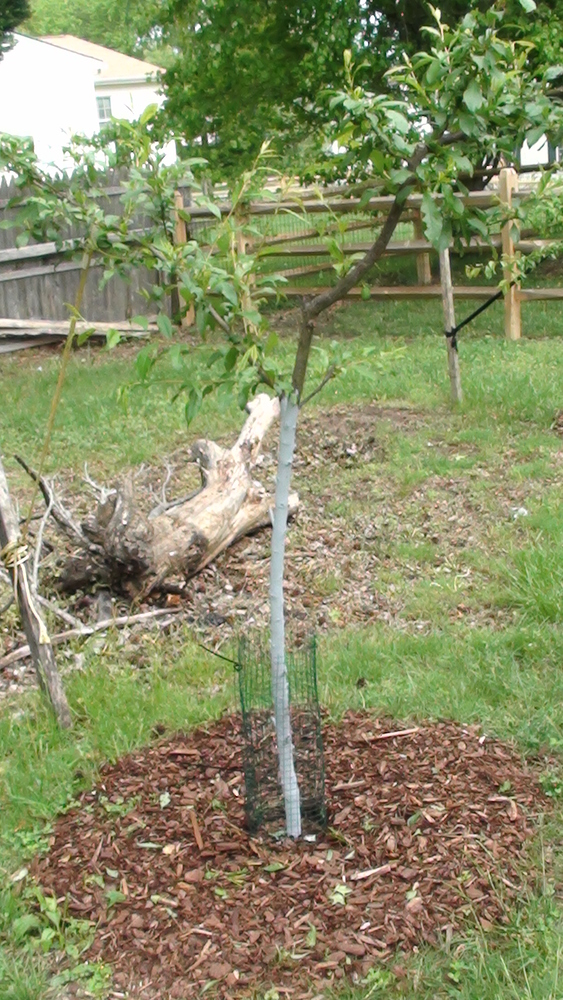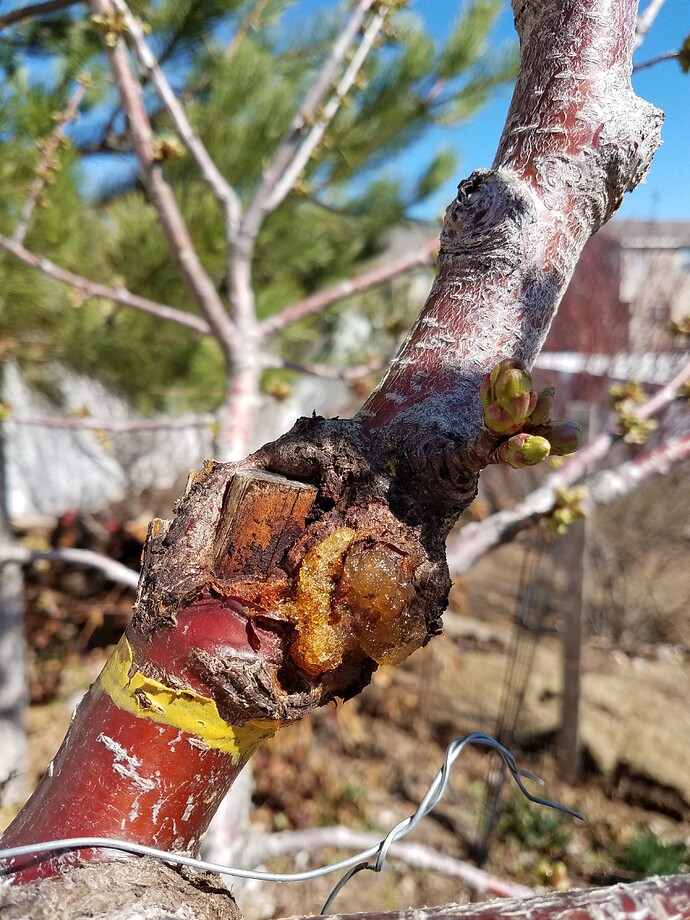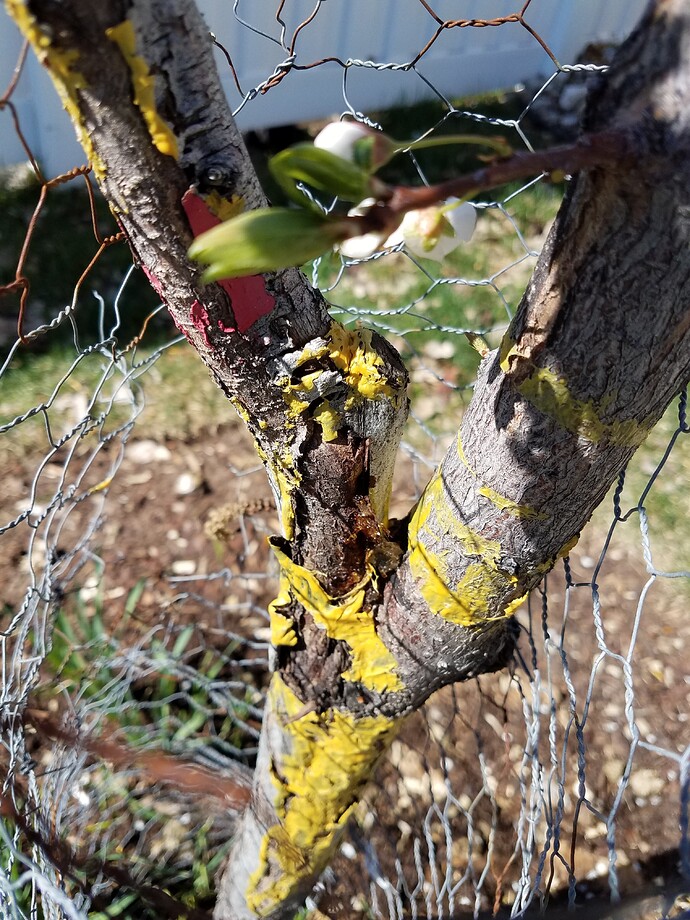The relationships of food to health are particularly hard to determine. After all we don’t have many volunteers wanting or able to stay on any one diet or food for long. So the effects of any one food or drink like coffee are confounded with dozens if not hundreds of other factors. I say give the scientists a break. They’ve increased our life span by dozens of yrs. And that’s despite the fact that we are increasingly sedentary, a known killer.
Good luck with the canker Keep us updated.
If I take out an infected nectaplum (canker), how long must I wait before replanting in the same spot? Or does it even matter? I wish there was something I could put down to sterilize the soil, maybe a big ole hot fire or a chemical. Has anyone here had this problem and replanted with good results?
Last years spring brought me way too much rain, then the summer was drought conditions. The pluots and some peaches split open and oozed sap. Now those wounds are looking like canker. I have 3 trees that may have to come out and I would like to fill those spaces, if possible. But, if the soil is infected with canker, I guess that wont be possible.
@JustAnne4 I am curious how you’ve used colloidal silver in a greenhouse. Could you tell us some of the details (dilution, where/what you used it for and the results).
And for damping off, one of the best cures/prevention is camomile tea. IIRC just brew it as you would for drinking, cool and dilute 3-4x (you should find the details online), and water with it. I have used it on seedlings and it worked well the times I’ve used it.
I never tried that, I use hydrogen peroxide. Works great, kills fungus gnats too, and provides the roots with a shot of oxygen.
Hey Steve, I used it prophylactically under lights when beginning my seeds. Now I use a sand/sulfur powder under lights and in the high tunnel (1 c sand+1/2 tsp micronized sulfur pwdr). To me it didn’t make sense to use a ‘wet’ solution when the problem comes from wetness, LOL. But I can see if you use it when you water in your seeds it would be good. Sulfur is awesome to prevent fungal problems but once they’ve started it doesn’t seem to work so well. I also make a dust using Actinovate, Sulf and finely ground Epsom salts titrated into Azomite. Azomite is a nice carrier for organic anti-microbial dusts. I’ve used these for the garden and haven’t developed tried-and-true formulas for the orchard, as I’m fairly new at that. I suspect there will be a lot of crossover. 
So it’s coming up on two months since the surgery… how’s the tree doing now?
Tree seems okay.
It flowered nicely, set a couple fruit, wound seems clean. In the photos there are black spots that look like mold but I didn’t see them while taking the photo. Could be mold, not sure. In any case, the paint tends to crack over time and I apply a new layer when it does. So it just got a new layer of paint today. Unfortunately, it got pounded with hail yesterday and has chips in the bark all over. There’s always something trying to kill your trees. We’ll see how it turns out.
Sprayed with copper a couple weeks ago. Record rain/snow mix yesterday. Today I’m seeing what appears to be signs of canker on 3 of my trees. Any recommendations? We’ve also got rain in the forecast about every other day this next week. I could cut out to a certain extent, but is that a good idea to do now or should I wait until I have a dry spell or in the summer? I’ve always heard you don’t prune these trees until summer. Here’s the combo plum and this is on the Italian…
Here’s the Stark Gold Cherry graft from last year on a combo cherry…
Here’s the combo pluot…
Any more updates?
Hi, I had this happen to an Italian prune plum, and this is what I did. I took a small disposable plastic bowl and put in one tablespoon of copper. I mixed it with three tablespoons of water. I mixed it, put on my nitrile gloves and took a pocket full of cotton balls with me and went to my orchard. I dabbed the blue copper mixture right onto the wounds of canker on the tree. Well, I have done this for a few years now whenever I see canker (if my spraying does not take) and the canker dries up and the bark grows over nicely, and the canker is gone. I did not read about this, I just felt sick one day that my tree looked just like yours and I couldn’t stand it! So I fixed it!
I may be wrong but that looks to me like borer damage. BC usually has a water or gum soaked area with slightly darker gumming. You could go smell your tree, will have sour smell if BC. Good luck!
No smell, but I don’t have a great smeller. Since I posted, I’ve also found it on the Flavor Delight Aprium and the All-In-One Almond. Very gummy sap coming out. Funny how it’s right after the big storm we had yesterday. I guess it wouldn’t hurt to try what mrsg47 advocated above and then paint brush with Neem. But I wondering if I should attempt to do it today when it’s going to rain again tomorrow and then every other day for about a week or should I wait for a dry spell.
There is a blast stage that blackens and kills buds. Also there is usually a watery soaked area just below gumming. Check this site out, very good info and pics there. ucipm- bacterial canker. Check out the photos of the blast stage. If you have that many trees infected blast should be pretty obvious. If your trees have not blossomed, look at the buds. They will be dead and black with the blast. Sorry I don’t know how to link yet, hopefully soon, just learned how to post pics a few weeks back.
Buds and blossoms (everything else) are all looking good.
Seems to be bad crotches were there is oozing. Inverted bark means there is no dominant branch wrapping tissue around a subdominant one. Pressure from growth is wounding during this scenario, wounds illicit the goop. Just a suggestion- accurate diagnosis is impossible without a sample, a microscope and a bit of training. I lack all three, but I do know a bad crotch when I see one.
I am leaning towards borrers. If you look at the flavor supreme the gum looks clear. Some of those other are light amber, I believe the sawdust turns the gum this color making it hard to diagnose. I would check that same sight, ucipm for borrers and treat accordingly. I always paint my tree trunks to protect them from sunburn, which then leads to borrers. Get a paper clip and straighten, remove sunburnt bark, usually blackish, and poke up in all the little holes you find. Hopefully they have not emerged yet. After that paint with interior white laytex paint mixed 50/50 with water to seal back up. The paint is not to heal but seal from future intrusions and preventing more sunburn. Also, @scottfsmith recommends treating trunks with 100% neem oil in another thread here. Good luck!
Also borrers are notorious for attacking right at graft points. Always seal and paint these areas well.
Borers are no mystery- they leave easy to find tunnels with dead tissue outside of them so you don’t have to violate living tissue to find them. At least, that is my experience. Often you can follow the tunnels to the borers themselves, but that usually involves cutting into a bit of living tissue. Sure is satisfying to squish them, though.
Alan I saw a video someone made for killing borers. He surrounds the trunk with some hvac ducting, duct tapes for a simple seal, then leaves a hose on for a couple hours to drown the borers. I’m going to try it on my peach.










